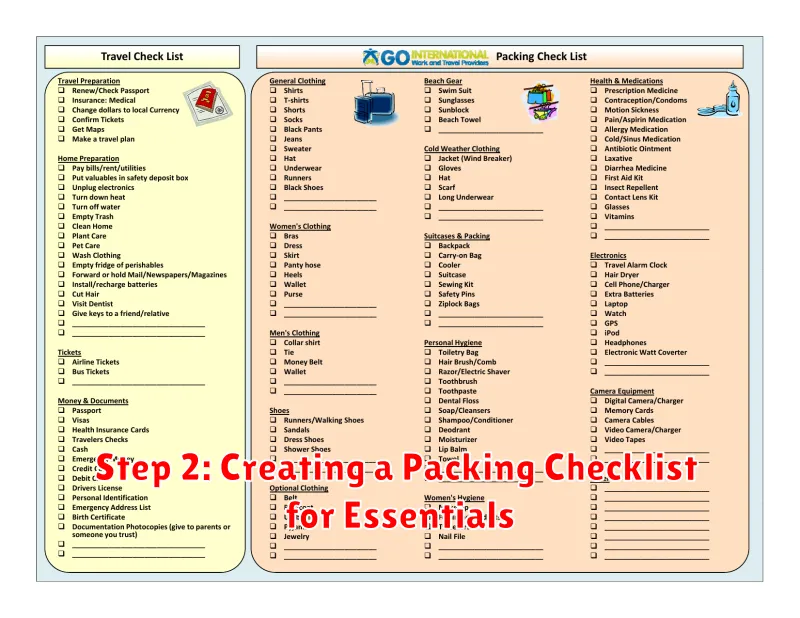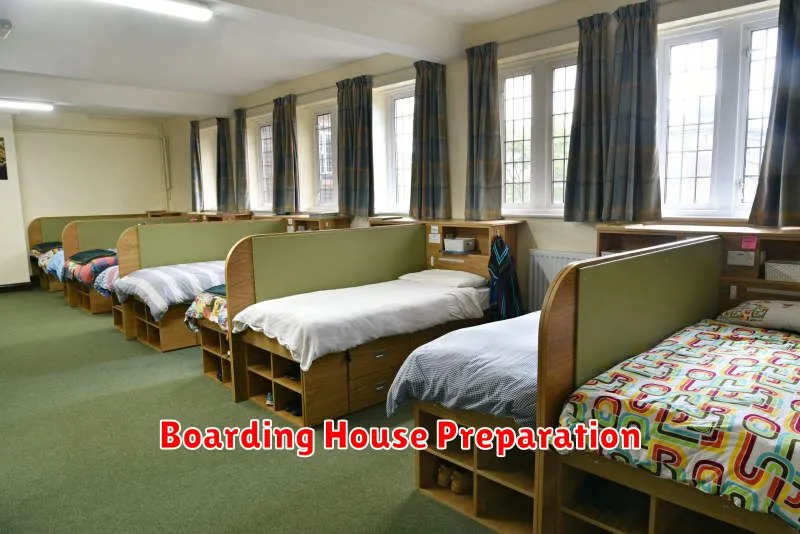Moving into a boarding house can be an exciting and affordable way to experience a new city or rental situation, but it also requires careful planning. This guide will walk you through everything you need to know to prepare for your move to a boarding house, from finding the right place and understanding your rental agreement to packing efficiently and settling in smoothly. We’ll cover essential topics like packing tips, roommate compatibility, and what to bring, ensuring your transition is stress-free and enjoyable. Let’s dive into how to make your boarding house move a success!
Introduction: Planning a Smooth Move
Moving to a new boarding house can be exciting, but it also requires careful planning to ensure a smooth transition. This process involves more than just packing your belongings; it’s about organizing your move strategically to minimize stress and maximize efficiency.
Before you even start packing, it’s crucial to create a detailed checklist. This checklist should include tasks like contacting your potential landlord to confirm move-in details, arranging transportation for your belongings, and notifying relevant parties of your address change.
Proper planning also involves setting a realistic timeline. Don’t underestimate the time needed for packing, cleaning, and transferring utilities. Building in buffer time for unforeseen circumstances can save you from last-minute panic.
Finally, remember to gather essential supplies well in advance. This includes packing materials like boxes, tape, and bubble wrap, as well as cleaning supplies for your old and new rooms. Being prepared will make the entire moving process significantly less stressful.
Step 1: Researching the Boarding House Location
Finding the right location is crucial when choosing a boarding house. Consider your daily commute; how long will it take to get to work, school, or other important destinations? Proximity to public transportation is a major factor for many, reducing reliance on a personal vehicle.
Think about the surrounding neighborhood. Is it safe? Are there amenities nearby, such as grocery stores, pharmacies, and restaurants? A walkable neighborhood can significantly improve your quality of life. Research the area’s crime rates and overall safety using online resources and local reviews.
Your budget will also influence your location choices. Boarding houses in more desirable areas tend to be more expensive. Balance your ideal location with your financial constraints to find a suitable and affordable option. Also consider the availability of parking if you own a car.
Finally, think about your lifestyle. Do you prefer a lively, bustling area or a quieter, more residential setting? Matching your preferred environment with your chosen location will contribute significantly to your overall happiness in your new boarding house.
Step 2: Creating a Packing Checklist for Essentials

Moving to a boarding house requires careful planning, and creating a packing checklist for essentials is crucial. This ensures you don’t forget vital items during the hectic moving process. Prioritize packing essential documents like your ID, lease agreement, and any relevant financial papers.
Next, focus on clothing. Pack enough for a week, including underwear, socks, and versatile tops and bottoms. Consider the climate and pack accordingly. Don’t forget shoes!
Toiletries are another essential category. Include toothbrush, toothpaste, soap, shampoo, and any personal medications. Pack these items securely to prevent spills.
Depending on your boarding house’s amenities, you may need bedding like sheets, blankets, and pillows. If you’re unsure, confirm with your landlord or housing provider.
Finally, include any personal electronics you’ll need immediately, such as your phone, charger, and laptop. Remember to pack essential chargers for all your devices.
Creating a detailed checklist and checking off each item as you pack will reduce stress and ensure a smoother move. Remember to keep your essentials easily accessible for the first few days in your new boarding house.
Step 3: Understanding House Rules and Policies
Before signing any lease or moving in, thoroughly review the boarding house’s rules and policies. This is crucial to avoid future conflicts and ensure a smooth living experience. Familiarize yourself with everything, from quiet hours and guest policies to parking regulations and pet restrictions.
Pay close attention to clauses regarding utilities, cleaning responsibilities, and maintenance requests. Understanding who is responsible for what will prevent misunderstandings and disagreements down the line. Note any specific procedures for reporting issues or submitting maintenance requests.
Don’t hesitate to ask the landlord or property manager for clarification on any points you find unclear or ambiguous. It’s better to ask questions upfront than to deal with problems later. Clearly understanding the rules will help you be a responsible and respectful resident, contributing to a positive living environment for everyone.
Finally, make sure you receive a written copy of the house rules and policies, and keep it in a safe place for easy reference. This document serves as a valuable guide throughout your stay and protects your rights as a tenant.
Step 4: Meeting and Communicating with Roommates

Before you even move in, initiate contact with your future roommates. A simple text or email introducing yourself goes a long way. This allows you to get a feel for their personalities and expectations.
Discuss important shared areas like the kitchen and bathroom. Establish cleaning schedules and responsibilities to avoid conflicts later on. Consider creating a shared document outlining these agreements for easy reference.
Open communication is key. Don’t be afraid to voice your concerns or preferences. A respectful and transparent approach will foster a harmonious living environment. Remember, you’ll be sharing a space, so compromising is essential.
Set clear expectations regarding guests, noise levels, and shared resources like Wi-Fi. Addressing these potentially contentious issues upfront prevents misunderstandings and ensures a smoother transition into your new shared living arrangement.
Finally, plan a casual meet-up before moving in, if possible. This allows everyone to get to know each other personally and establish a friendly atmosphere before the big move.
Step 5: Organizing Your Space Efficiently
Moving into a boarding house often means dealing with limited space. Efficient organization is key to maximizing your comfort and minimizing clutter. Before you even start packing, take inventory of what you own. Be honest – do you really need everything?
Decluttering is your first step. Donate, sell, or discard items you no longer use, need, or love. This will significantly reduce the amount you need to transport and store. Focus on keeping only essential items.
Maximize vertical space. Use shelves, stackable containers, and drawer dividers to create more storage capacity. Think about utilizing space under your bed or hanging organizers for clothes.
Invest in multi-functional furniture. Items like ottomans with storage or beds with built-in drawers can help you save space and keep things organized. Look for furniture that is compact and easily maneuverable.
Utilize storage solutions. Clear plastic bins are great for storing seasonal items or less frequently used belongings. Label everything clearly to make it easy to find what you need. Remember, a well-organized space feels larger and more manageable.
Tips for Adjusting to Boarding House Living
Moving into a boarding house presents a unique set of challenges and opportunities. Here are some tips to help you adjust to this new living arrangement and make the most of your experience:
Communicate Effectively: Open and respectful communication is key. Talk to your housemates about shared spaces, noise levels, and cleaning schedules. Establishing clear expectations upfront prevents misunderstandings and fosters a more harmonious living environment.
Respect Shared Spaces: Boarding houses often involve sharing common areas like kitchens, bathrooms, and living rooms. Be mindful of others by cleaning up after yourself, respecting their belongings, and being considerate of their schedules.
Establish Boundaries: While fostering a friendly atmosphere is important, it’s equally crucial to establish personal boundaries. Communicate your need for quiet time or personal space as needed.
Compromise and Collaborate: Living with others requires compromise. Be willing to negotiate and find solutions that work for everyone. Collaborating on chores or shared expenses can streamline the living experience.
Embrace the Social Aspect: Boarding houses often offer a unique social environment. Take advantage of opportunities to connect with your housemates, engage in shared activities, and build a sense of community. This can lead to lasting friendships.
Be Patient and Understanding: Adjusting to a new living situation takes time. Be patient with yourself and your housemates. Remember that everyone is adapting, and occasional disagreements are normal. Focus on resolving conflicts constructively.
Know Your Rights and Responsibilities: Familiarize yourself with your lease agreement and understand your rights and responsibilities as a tenant. This will help avoid conflicts and ensure a smooth living experience.
Conclusion: Ensuring a Comfortable Transition
Moving to a boarding house can be a significant change, but with careful preparation, the transition can be smooth and comfortable. Remember to thoroughly research potential locations and thoroughly check your contract before signing.
By packing efficiently, organizing your belongings, and familiarizing yourself with the house rules and your new environment, you can significantly reduce stress and create a positive first impression. Don’t underestimate the power of a well-planned move!
Proactively communicating with your new landlord or housemates will foster a welcoming atmosphere. Taking these steps will help ensure a positive and stress-free transition into your new boarding house home. Good luck with your move!

